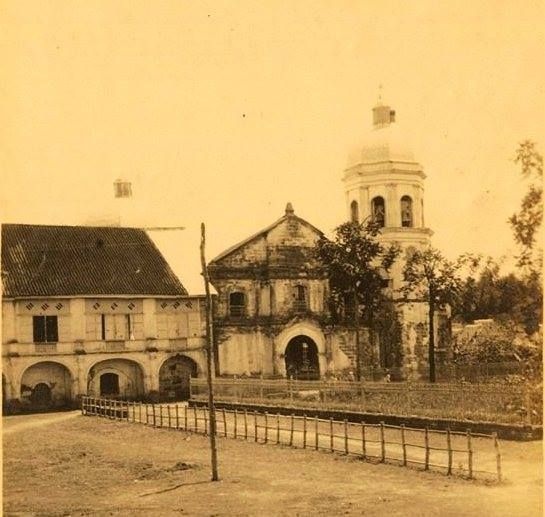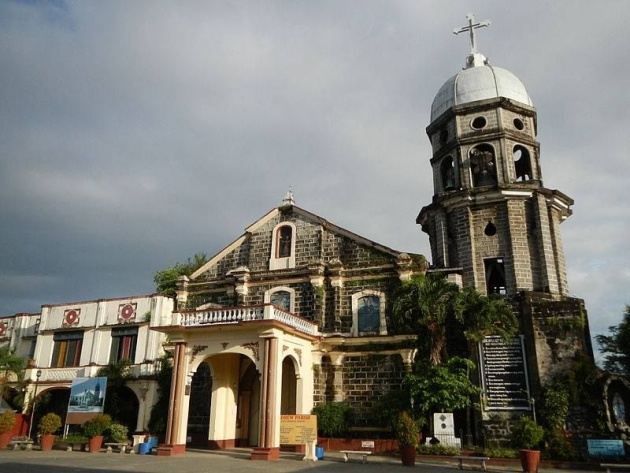(Old photo shows Candaba's center of worship, as it appeared around 1911-1912, from the Luther Parker Collection. by Alex Castro)
Centuries before, Candaba had impressed the Spaniards for its flourishing economy, not to mention its antiquity, calling it “Little Castilla”. Augustinians quickly descended upon the wetlands to claim Candaba as house of their order in 1575, with Fray Francisco de Ortega as prior. Its first recognized cura, however, is Fray Francisco Manrique, who came all the way from the Visayas.
The Bishop of Manila, Fray Domingo de Salazar, caused Candaba to become an important mission center for the evangelization of other towns like Arayat and Pinpin (Sta. Ana). A church of light materials, dedicated to the apostle San Andres, was erected and by 1591, a convent had also been built.
As the town progressed, a stone edifice replaced the primitive church, built from 1665-69, under the helm of the dynamic church builder, Fray Jose dela Cruz. There is an account of a certain Fray Felipe Guevara building a grimpola (wind vane) and a campanario as early as 1875.
A later successor, Fray Esteban Ibeas, added the dome in 1878. He added bells from 1879-81, dedicated to San Agustin, San Jose, San Andres, Sagrado Corazon de Jesus and Virgen dela Consolacion. In 1881, Fray Antonio Bravo constructed the bell tower and added one more bell, dedicated to the Holy Trinity. All bells were cast by Hilarion Sunico of Binondo.
By the time the “pisamban batu” was done, it measured 60 meters long, 13 meters wide and 13 meters high. The campanario was repaired in 1890. In 1897, parish duties were transferred to the Filipino secular clergy. The first Filipino priest to serve was Padre Eulogio Ocampo.
In modern times, the church interior was damaged by a typhoon in the 60s, and was restored that same year. Previous to this, there are no records of damages caused by the acts of nature.
Today, the church has a very simple architecture. Columns and arches define its façade, with a triangular pediment on top. The arcaded convent front (now St. Andrew Archdiocesan School) features semi-circular arches with tuscan columns crowned with corinthian capitals in between. The Church of San Andres Apostol of Candaba observes the fiesta of its patron every year, on the 30th of November.




